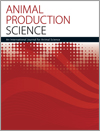
Animal Production Science
Volume 63 Number 1 2023
Beef cattle production is the most important agricultural sector in northern Australia. This review addresses concerns about the low rate of adoption of research-proven practices to improve reproductive performance in northern breeding herds. Needs and gaps in research and development are analysed, and options to increase adoption and implementation of research outcomes are recommended, in three targeted areas: breeding herd management, feedbase management, and management of environmental sustainability.
AN22065 Abstract | AN22065 Full Text | AN22065PDF (2.6 MB) Open Access Article
Genetic evaluation of Australian sheep is conducted for millions of animals for more than 100 traits. Prediction of genetic merit of animals includes correcting observed phenotypes for environmental effects to allow fair genetic comparisons among animals, and is conducted by using old sheep data solutions because it was hard to fit these effects in each analysis. In the current scenario with more computing power, fitting all effects together and accounting for flock by sex by age interaction improves the utility of the model in predicting the performance of future progeny for weight traits.
AN21300 Abstract | AN21300 Full Text | AN21300PDF (1.3 MB) Open Access Article
Weaning in the first week is one of the most stressful events in the pig’s life, which can contribute to intestinal and immune system dysfunctions. This study found that glucagon-like peptide-2 and its microspheres improved the growth rate, and ameliorated inflammatory response by decreasing the content of inflammatory cytokines in serum and jejunal mRNA expression of weaning piglets. The results suggested that glucagon-like peptide-2 microspheres can be a proper candidate for the treatment of weaning stress in piglets.
AN22161Frequency of feeding during the periconceptional period did not alter reproduction in Merino sheep
 , Alexandra Morona, Allan Gunn, John Piltz
, Alexandra Morona, Allan Gunn, John Piltz  , Christopher J. Scott and Michael A. Friend
, Christopher J. Scott and Michael A. Friend
This study compared once-daily with alternate-day feeding of ewes during the mating period and found no change in rates of pregnancy, twinning, lambs raised per ewe or wool production, although alternate-day feeding increased weight loss. The findings indicate that producers can reduce labour requirements by feeding at 2-day intervals, but increased monitoring and management intervention may be necessary to maintain liveweights when fed long term.
AN22161 Abstract | AN22161 Full Text | AN22161PDF (1 MB) Open Access Article
We investigated the effect of a fibrolytic enzyme (β-mannanase) on feed efficiency in lactating dairy cows. Enzyme supplementation of a diet low in protein (14.6% of dry matter) improved feed conversion efficiency of cows compared with a higher protein (16.1% of dry matter) diet. Supplementation reduced somatic cell counts, whereas milk yield and composition were similar to those found with the higher protein diet.
Optimum utilisation of abattoir by-products in poultry feed can reduce production cost and the need for waste disposal. Heat-processed bovine blood, rumen digesta and vegetable oil concentrate was examined as a partial replacement for soybean meal in poultry diets. Replacement of up to 50% of soybean meal improved liveweight gain and feed conversion efficiency of broilers, additionally providing cost and environmental benefits.
AN22159 Abstract | AN22159 Full Text | AN22159PDF (896 KB) Open Access Article
AN22092Meat acceptability of crossbred bulls fed a high-grain feedlot diet with antimicrobials and a blend of organic trace minerals and yeast
 , Murilo Augusto Tagiariolli, Edinéia Bonin, Ana Carolina Pelaes Vital, Ana Guerrero
, Murilo Augusto Tagiariolli, Edinéia Bonin, Ana Carolina Pelaes Vital, Ana Guerrero  , Rodolpho Martin do Prado
, Rodolpho Martin do Prado  , Luiz Fernando Costa e Silva, Vicente Diaz Ávila, Venício Macedo Carvalho
, Luiz Fernando Costa e Silva, Vicente Diaz Ávila, Venício Macedo Carvalho  and Ivanor Nunes do Prado
and Ivanor Nunes do Prado 
Natural products, organic trace minerals and yeast have been studied to improve meat quality and acceptability from bulls. This study evaluated meat acceptability from crossbred bulls fed antimicrobials with and without a natural product based on organic trace minerals and live yeast. A combination of monensin and mineral–yeast blend may be beneficial to meat acceptability and consumer willingness to buy.
Beef from bulls fed grass often needs to be made more tender by feeding high-energy feeds such as grain. However, beef from animals that have been fed grain may be more susceptible to oxidation and thus quality loss. In this experiment, the effect of feeding grass-fed bulls with high-energy corn on the oxidative stability of beef was investigated. The results showed that feeding corn reduced the vitamin E content and antioxidant status of beef.



